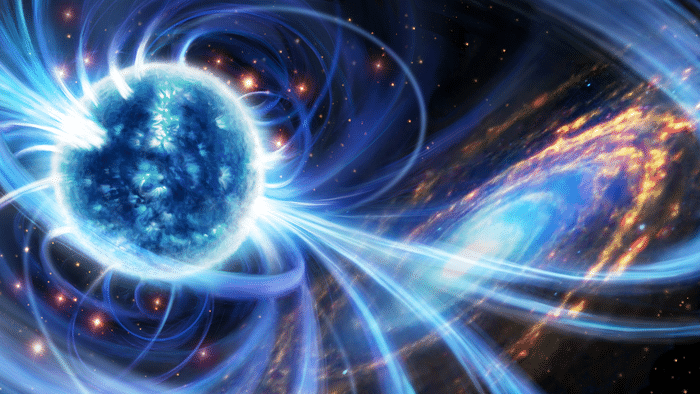Fast radio bursts are short flashes of light from space that are unpredictable. Since they were discovered in 2007, scientists and astronomers alike have been trying to better understand them.
Flashes or bursts typically only last thousandths of a second, yet have just as much energy as the Sun gives in just one day. Each day, there are several hundreds of these flashes, and they can be seen all over the sky.
In the past week, two studies were published in the journals Nature and Nature astronomy that touched on this very topic. Their goal was to try to better understand these bursts. When speaking in a press statement, Franz Kirsten, who led one of the teams, explained,
“We wanted to look for clues to the bursts’ origins. Using many radio telescopes together, we knew we could pinpoint the source’s location in the sky with extreme precision. That gives the opportunity to see what the local neighborhood of a fast radio burst looks like.”

The spiral galaxy M81 is located about 12 million light-years away from Earth. (Image credit: X-ray: NASA/CXC/SAO; Optical: Detlef Hartmann; Infrared: NASA/JPL-Caltech)
To study the bursts, they used the highest resolution and sensitivity to observe bursts. Then, they used data from various other telescopes to compare.
Upon measuring the data, they discovered that the bursts were coming from a nearby spiral galaxy, Messler (M 81) around 12 million light-years away. Based on that information, this is the closest detection of FRBs to ever be made.

An artist’s depiction of a magnetar in galaxy M81. (Image credit: Chalmers University of Technology/Daniëlle Futselaar, artsource.nl)
Up until now, FRBs have mostly been found in galaxies that contained young stars. When trying to understand where the FRBs are coming from in M81, they have speculated that they are likely coming from magnetars, which are strong magnets in the universe.
“We expect magnetars to be shiny and new, and definitely not surrounded by old stars,” explained Jason Hessels, one of the researchers, in a press statement.
“If what we’re looking at here really is a magnetar, then it can’t have been formed from a young star exploding. There has to be another way.”
The researchers believe that a white dwarf, or the cooling core of a large burned-out star, could have pulled gas from another star. As time passed, the extra mass could have caused the dwarf to collapse into a magnetar.
For now, they are still unsure of what has caused the FRBs or why they are so oddly similar to others that have been found among other galaxies. However, as they continue their research, we are likely sure to find out.

